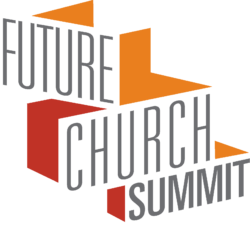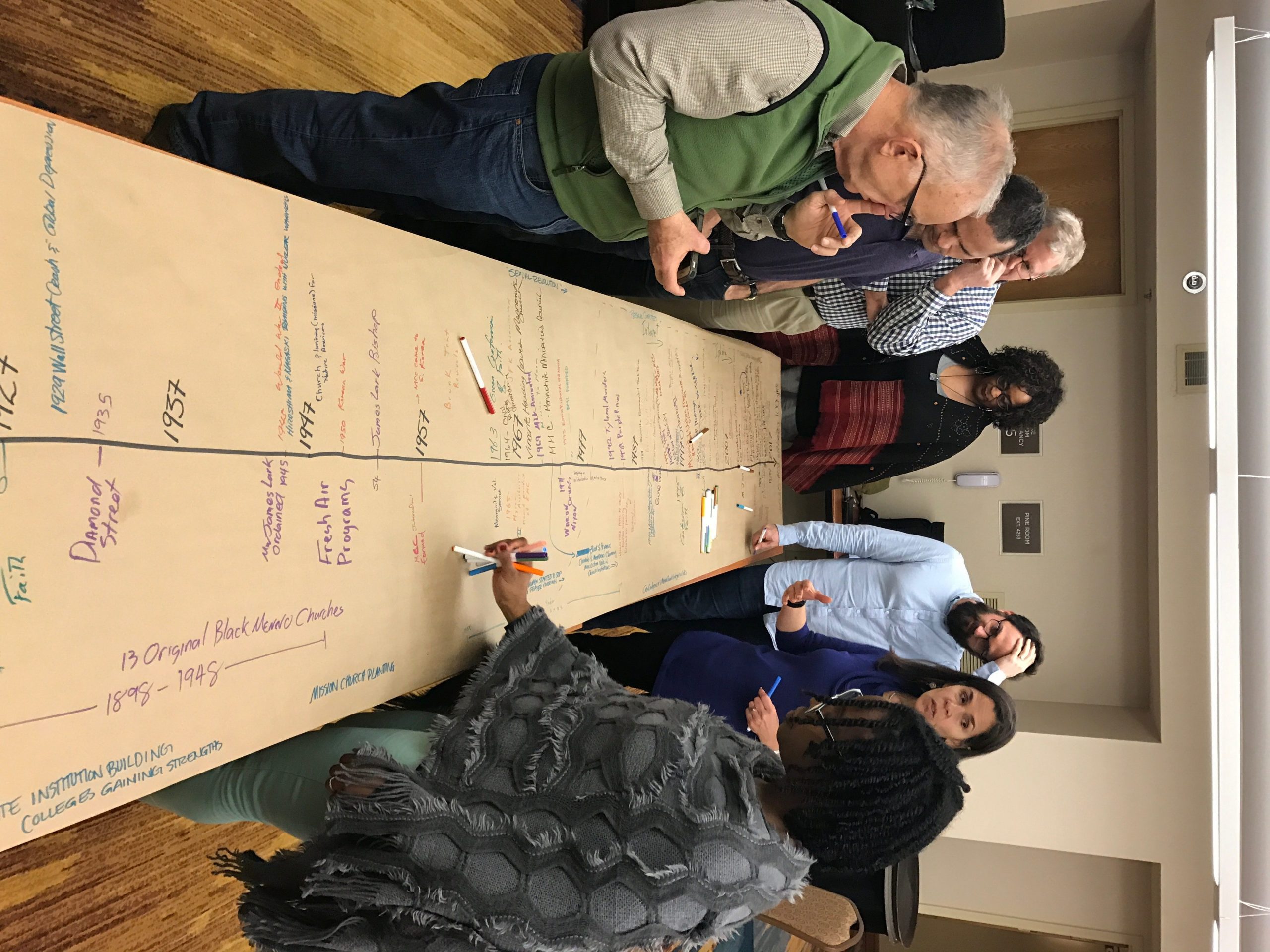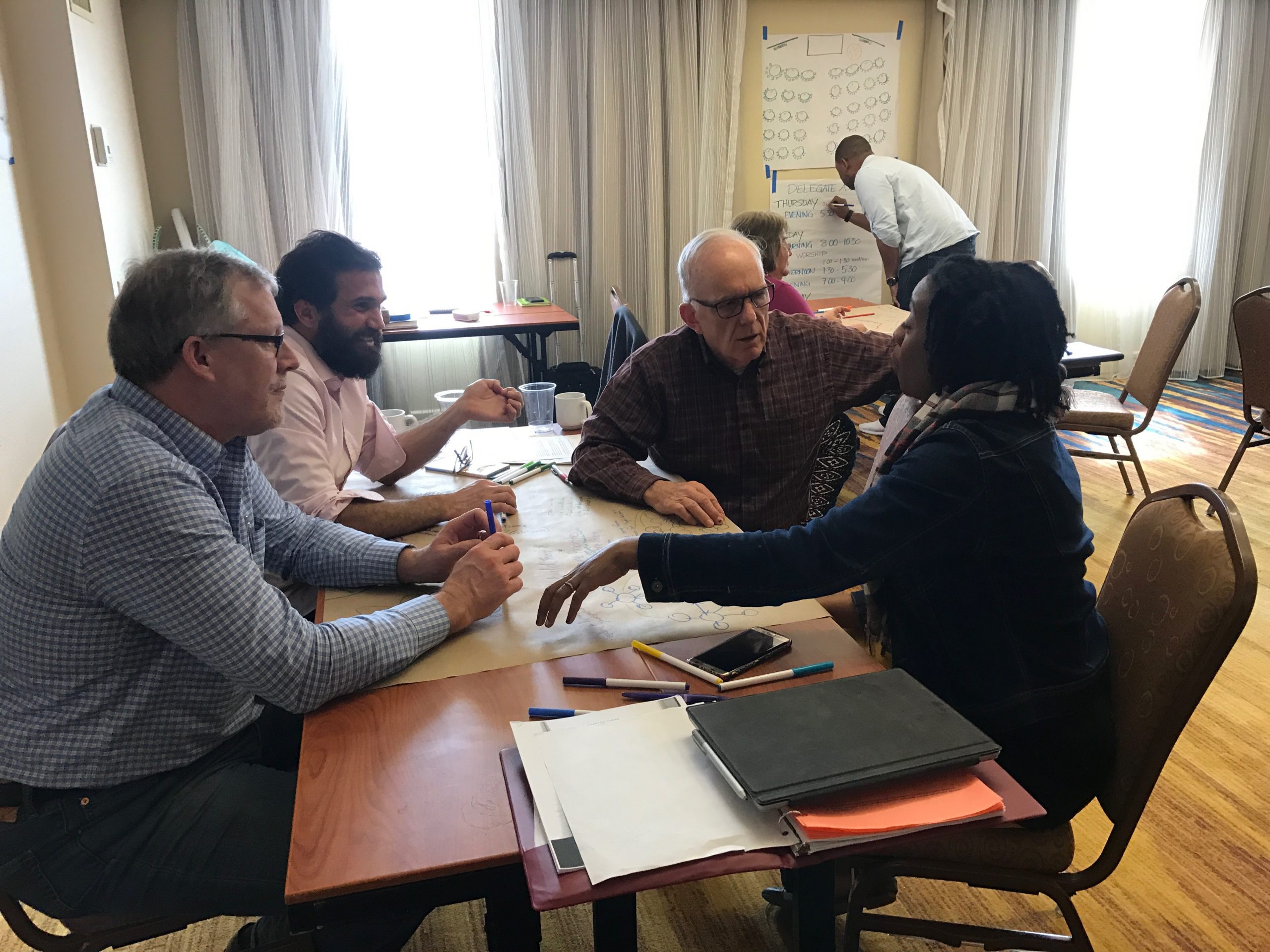By Janie Beck Kreider

“I feel we have lost our vision, and it needs to be reignited. I came to this church to be part of a different narrative – a counter-cultural, anti-Christendom movement that follows a radical Jesus. The first Anabaptists chose to be radical – not assimilated to culture or the spirit of the age. We need to go back to the beginning – our radical reformation theology – and reignite an Anabaptist vision in our own context.”
—Hyun Hur, co-founder and director of ReconciliAsian in Pasadena, California, speaking at the first planning meeting for the upcoming Future Church Summit, a gathering to imagine an Anabaptist future for Mennonite Church USA
(Mennonite Church USA) – Twelve people representing diversity across the denomination came together in Orlando, Florida, Jan. 9-11 to design a process for Mennonite Church USA to forge a path into the future. Under the guidance of consultant Catherine Barnes of Eastern Mennonite University’s Center for Justice and Peacebuilding, the Design Team set plans in motion for a generative, open space for denomination-wide conversation—the Future Church Summit—to dream together, reset priorities and engage one another in answering the question: How will we follow Jesus as Anabaptists in the 21st century?
The Future Church Summit will be held July 6-8 during Mennonite Church USA’s 2017 Convention in Orlando. After a truncated, four-hour Delegate Assembly session for essential business, including the consideration of a revised resolution on Israel-Palestine that was tabled by delegates in Kansas City in 2015, approximately 300 additional people will join the official delegate body for the Future Church Summit.
The summit will include generating a timeline of key events, turning points and developments in the Mennonite Church – to name and reflect on the denomination’s historical legacies, taking stock of where the church is now and the direction it is heading. Conversation at table groups will include appreciative inquiry interviews and the World Café model of collaborative dialogue. Additionally, the summit will include a time for “speed networking” interviews with participants at the convention, with a special emphasis on gathering input from youth and young adults. Trained teams will be equipped to listen and gather input from table groups, synthesizing ideas to report back to the plenary. These “Theme Teams” will include artists working in various media, including poetry, music and visual art, to generate responses to the ideas and themes as they emerge.

Design Team members generate a historical timeline of key events, decisions and turning points in Mennonite Church USA. Pictured left-right: Luke Gascho, Ken Burkholder, Terry Shue, Michelle Armster, Isaac Villegas, Catherine Barnes and Chantelle Todman Moore. Photo by Janie Beck Kreider.
Talks about the new process began in fall 2016, when Glen Guyton, chief operating officer and director of Convention Planning for Mennonite Church USA, presented a proposal to the Constituency Leaders Council and Executive Board.
“It has become clear that we can no longer do business-as-usual; something needs to change,” Guyton said. “Somewhere between the formation of Mennonite Church USA and now, we have forgotten how to talk to each other. Trust in the institution has eroded. The Future Church Summit is an opportunity to take a risk and see where we go from here. Hopefully we can start to rebuild trust in the denomination.”
The summit at Orlando will be the first step in an ongoing process that will continue through the next biennium. Denominational leaders and institutions—including all the churchwide agencies, Executive Board and staff—will use the vision generated at the summit to reshape denominational priorities and restructure their work.
The Design Team is hopeful that the summit will lead to:
- A deeper capacity to listen to each other across our diversity, helping to strengthen our ability to live together within our church and in the wider world.
- A pathway toward greater trust and meaningful relationships, which will enable us to develop greater resilience and ability to act together as we follow Jesus.
- An emergent understanding of what it means to be a church together. This will be rooted in our shared and different understandings of our history together and the legacies it has created.
- Relevance and application at all levels of the church – that the summit will not be “yet another process,” and that the outcomes set priorities that guide denominational, conference and congregational leaders.
- Deep engagement in what it means to be Anabaptist-Mennonite in the 21st century, including what it means to be a peace church and how we understand our evangelism.
The Design Team is energized by the thought that there are no set answers to any of the questions participants will be exploring at the summit and that the values, ideas and priorities that come out will emerge from the group as a whole. The anticipated outcome will be a document that brings together the convergent ideas and priorities that emerge through the process, with all participants expressing their personal preferences through interactive polling technology.

Design team members, pictured left to right: Terry Shue, Isaac Villegas, Luke Gascho and Chantelle Todman Moore, discuss the future of Mennonite Church USA using the World Cafe method of collaborative dialogue. Photo by Janie Beck Kreider.
Immediately following the summit on Saturday, the Delegate Assembly will convene for an opportunity to officially affirm or reject the outcomes of the process. If affirmed by delegates, the outcomes would specifically direct the priorities of the Executive Board moving forward.
“It is our hope that both the emergent understandings and the ideas and priorities generated through the summit will be given weight by Mennonite Church USA leadership, agencies, organizations, conferences and congregations in myriad ways,” Barnes said. “This gathering and the outcomes created will need to be carried forward in multiple layers to give it life beyond the Orlando convention.”
The Design Team and convention staff are working at intentional efforts to ensure the summit is as representative and inclusive of the diversity throughout the denomination as possible. All registered delegates—representatives from Mennonite congregations, area conferences and Racial/Ethnic groups across the country—will automatically serve as participants in the summit. As participants in both the Delegate Assembly and the Future Church Summit, delegates at Orlando will have an especially important role to play in forging the future of the church.
Additional participants in the summit will go through a separate registration process, and must be nominated by an entity connected to Mennonite Church USA.
For more information about how to participate in the summit, go to http://convention.mennoniteusa.org/future-church-summit/.
###

